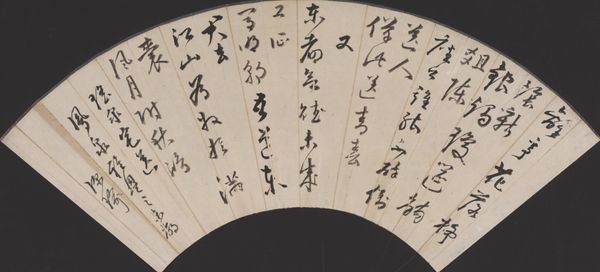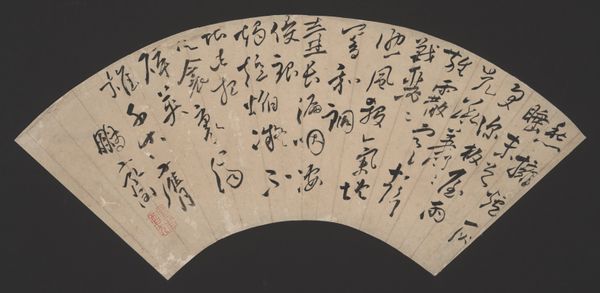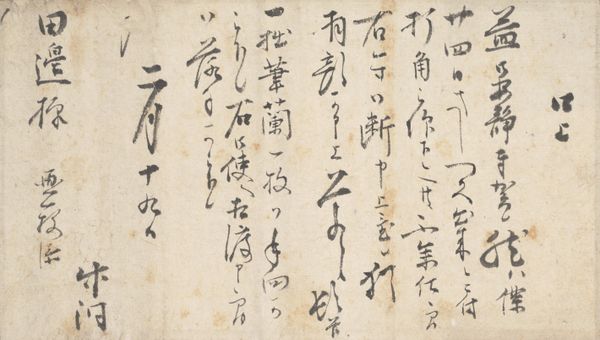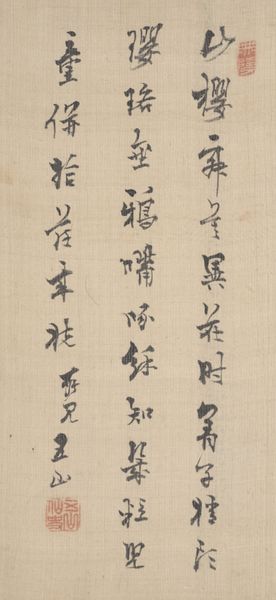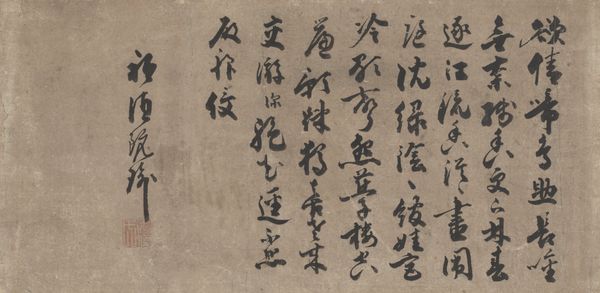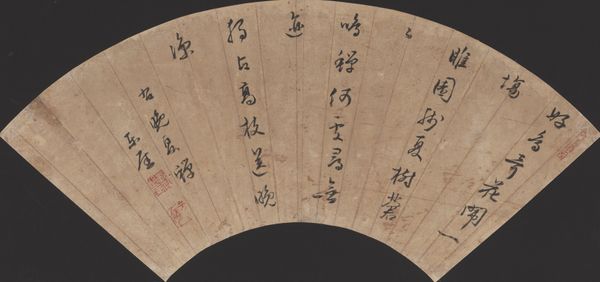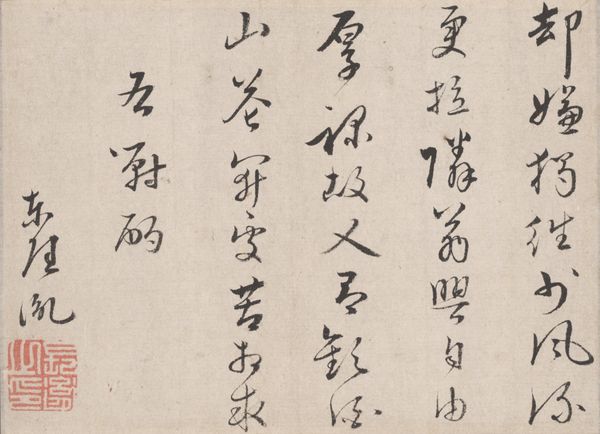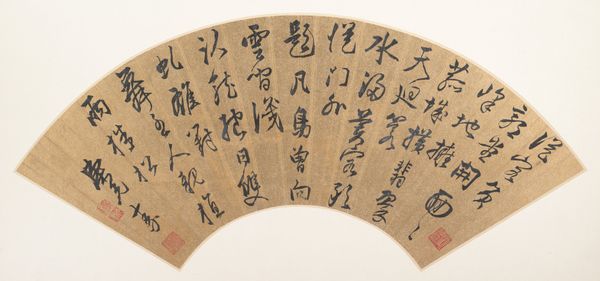
paper, ink-on-paper, ink
#
asian-art
#
paper
#
ink-on-paper
#
ink
#
calligraphy
Dimensions: 9 × 18 15/16 in. (22.86 × 48.1 cm) (sheet, fan)11 3/16 × 19 1/2 in. (28.42 × 49.53 cm) (mount, inner mount)13 3/16 × 23 3/4 in. (33.5 × 60.33 cm) (mat)
Copyright: Public Domain
Editor: This is "Wine and Fish," an ink on paper work by Okada Beisanjin, created in the late 18th to early 19th century. It's shaped like a fan, with these elegant, flowing calligraphic forms. It almost looks unplanned, yet balanced. What do you see in this piece? Curator: As a materialist, I find myself drawn to the labor embedded within this seemingly simple form. Consider the paper: its production, likely handmade, its source material, and the social systems that sustained such craft. The ink too, its composition, the gathering of pigments... these processes are just as vital as the calligraphic artistry. The shape itself also implicates labor - a fan intended for use! How would that social setting further illuminate Beisanjin's intended audience? Editor: That’s interesting. I hadn’t thought about the actual making of the paper itself. What was the role of the calligrapher then? Curator: The act of calligraphy transforms these materials into something culturally potent. The choice of text, its meaning, and the artist's individual expression – all these elements are made manifest through ink and paper. This intertwining of material and artistic practice dissolves the false separation between craft and high art, don't you agree? Editor: Definitely, seeing it this way helps connect the artist’s labor with the value we place on the final product. I appreciate this artwork in a completely new light. Curator: Indeed, by examining the materiality and means of production, we begin to understand this art as part of the social and economic currents that shaped its creation. It's about looking beyond the surface!
Comments
No comments
Be the first to comment and join the conversation on the ultimate creative platform.
